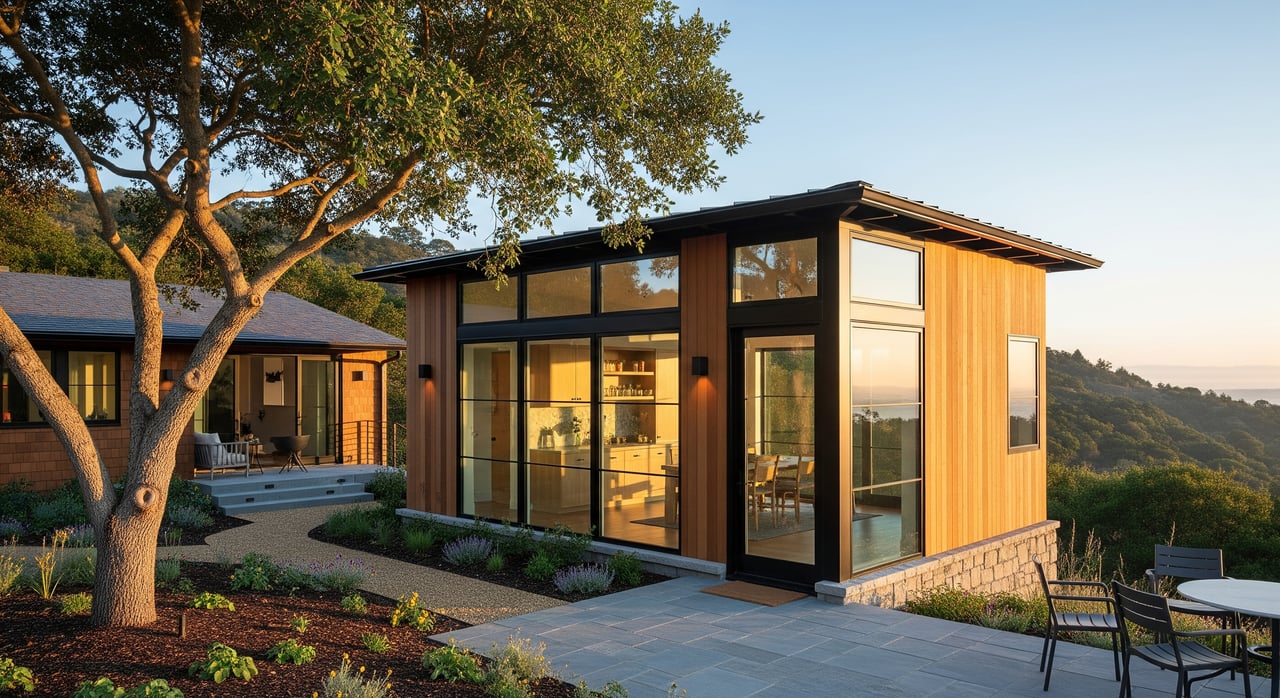30 Most Popular Types of Houses and Their Defining Characteristics
House Beautiful November 23, 2024
Buyer

House Beautiful November 23, 2024
Buyer

My first encounter with different types of houses came through playing the The Game of Life. During the board game, when it was time to buy a home, I always hoped to choose the charming purple Victorian over the shabby split-level. Reflecting now, I wish I had hoped for house prices to match real-life real estate—$200,000 for a house with a library, parlor, marble fireplaces, and a wraparound porch? Sign me up for a down payment!
But life isn't a board game, and there are far more than nine different styles of houses to explore. There are myriad styles of houses across the U.S. For instance, the Ranch style is prevalent in the Midwest, Colonial Revival styles of houses are common on the East Coast, and Spanish Colonial styles thrive in California. The popularity of these types can vary by region, making it challenging to differentiate between styles.
By examining architectural elements like trim, rooflines, the number of floors, and building materials, you can determine which types of houses you prefer and which ones don't appeal to you, once you're acquainted with all the styles available. To assist you, we've compiled a list of the most common types of houses, highlighting their defining features. Read on for our guide on types of houses from A to Z—or V, so to speak.
When you picture a townhouse, you likely think of a brownstone in Brooklyn or the Painted Ladies of San Francisco. These types of homes are typically multistory, single-family homes that share at least one wall with neighboring townhouses. The style has European roots, specifically English and French, and it's often found in urban areas.
A split-level is a multilevel, single-family home that’s separated by half-flights of stairs. They’re typically split into three or four levels meant to increase privacy within the home and make it feel more spacious. Garages are usually attached, the living rooms are quite large, and they feature low-pitched roofs. These types of homes were popular in the 1950s throughout the 1970s in the United States, but have fallen out of style in recent years.
Defined by the sharply slanted roof, saltbox houses are usually gable-roofed homes that have two stories in the front and only one in the back (due to the roof's steep angle). These types of homes are often found along the New England coastline.
Carriage houses can be identified by their oversize and often arched center doorways. As the name suggests, wealthy families built these types of houses in the past as accommodations for their horses and carriages. You usually see them in urban areas next to or adjoined with a standard row house.
Related Story: Elaine Santos and Windigo Architecture Converted a 19th-Century Carriage House Into a Warm, Modern Home
Known for its symmetry, a duplex is a standard, single-family home that has been split down the middle into two units. Each duplex has two fully equipped single-family homes, each with its own entrance. In urban settings, a duplex can also refer to a single apartment unit that spans two floors.
You can pick out Tudor homes easily thanks to their decorative half-timbering. This exterior accent is essentially a mock frame of thin boards with stucco or stone filling in the spaces between the boards. The rest of the exterior is usually brick. Tudors also tend to have a steeply pitched roof with multiple overlapping, front-facing gables (the triangular portion of the roof) of varying heights.
Related Story: An Architect Explains Why Tudor-Style Houses Are So Unique
Most commonly seen in New York City, but also found in Boston, Philadelphia, Washington, D.C., and other urban areas, brownstones are defined not by their look but by their materials. The brown sandstone that was used to coat the exterior of these brick houses built in the early 19th century gives them their name.
Related Story: How Designer James Jenkin Gave This Brooklyn Brownstone a Do-Over
As the name suggests, A-frame homes are characterized by a triangular silhouette in the shape of a capital A. Most common in northern parts of the U.S., they're designed so that snow and rain side easily down the sloped roof.
Related Story: BHDM Revitalizes a Quirky 1970s A-Frame in the Catskill Mountains
A standout example of both Colonial and Colonial Revival architecture, Cape Cod–style homes dot suburbs across New England. The low, single-story types of houses usually feature a large central chimney and little ornamentation.
True American Colonial architecture dates back to the Colonial era, from the 1720s to the 1780s. European settlers built these historic homes with steep roofs and symmetrical features in simple, rectangular shapes. True American Colonial homes will feature small-paned windows of wavy glass, a sign of the materials used at the time.
Related Story: What You Should Know About American Colonial-Style Houses
Inspired by 18th-century design, architects of the Colonial Revival style pay the same attention to symmetry but also borrow elements from other movements.
Related Story: The Natural World Inspired Cecilia Casagrande in Restoring This Boston Colonial Revival
Embraced for its comfortable bridge of modern and traditional, cottage-style homes feature classic elements like small rooms, dormer windows, and porches but often take on contemporary finishes and decorations, like the double gable and mixed-material facade shown here.
Affiliated with the Arts and Crafts movement of the late 19th and early 20th century, these types of houses incorporate gabled roofs, deep eaves, exposed rafters, and special stone or woodwork. The Gamble House in Pasadena (which starred as Doc Brown's house in Back to the Future) is a perfect example.
Harkening back to the United States' history as farmland, this style recalls the simple, function-forward architecture of barns and farm structures. Farmhouse homes are characterized by a symmetrical facade, simple gabled roof, and vertical-hung windows.
Related Story: The Beginner's Guide to Farmhouse Design
As its name suggests, this popular style is a combination of farmhouse elements with modern proportions, furniture, and decor. The marriage of rustic materials and modern lines is a favorite of Joanna Gaines, Leanne Ford, Lauren Leiss, and more.
Related Story: Is the Modern Farmhouse Trend Dead?
Balanced proportion and brick or stone exteriors appear on these francophile homes inspired by 17th-century manors. They typically have steeply pitched and sloping roofs , tall arched windows, symmetrical designs, and at least two stories. It was a common choice in tony suburbs during the post-World War I era.
Related Story: French Provincial Design Has Always Set the Bar for Casual Elegance
Peaking between 1714 and 1830, Georgian architecture replaced ornate Baroque buildings with more pared-back designs. Most often executed in brick or stucco, Georgian homes feature symmetrical facades with large, shuttered sash windows and pedimented doors, gabled roofs with dormers, and over-window ornamentation—all present in this home by M. Lavender Interiors.
Stay up to date on the latest real estate trends.

Seller
December 26, 2025
When your house doesn’t sell, it does more than disrupt your plans, it hits close to home.

Seller
December 23, 2025
Hearing talk about home prices falling? That may leave you worried about whether your house is losing value.

Seller
December 19, 2025
The housing market hasn’t felt this energized in a long time – and the numbers backing that up are hard to ignore.

Buyer
December 18, 2025
You may not want to put your homebuying plans into hibernation mode this winter.

December 18, 2025

Buyer
December 16, 2025
One of the biggest homebuying advantages you can give yourself today is surprisingly simple: a flexible wish list.
We Guide Homeowners through the complicated process of selling their home using our 4 Phase Selling Process and 3 Prong Marketing Strategy that alleviates their stress and moves them effortlessly to their next destination. Schedule a 15 Minute Complimentary Strategy Session Today